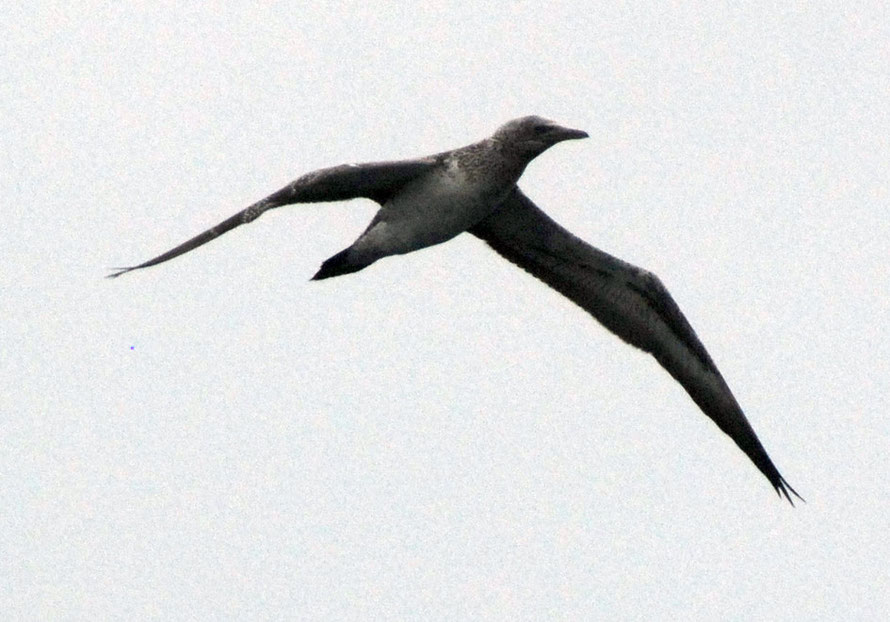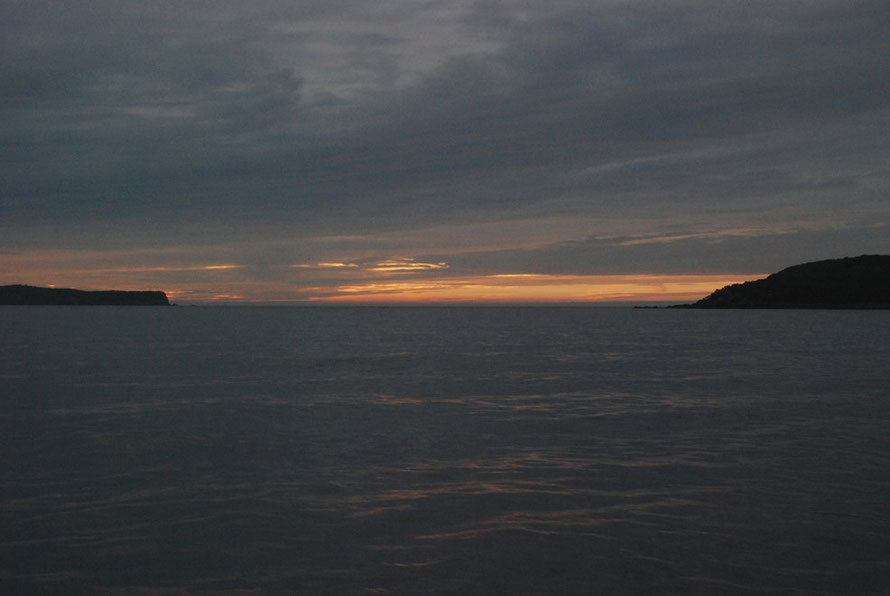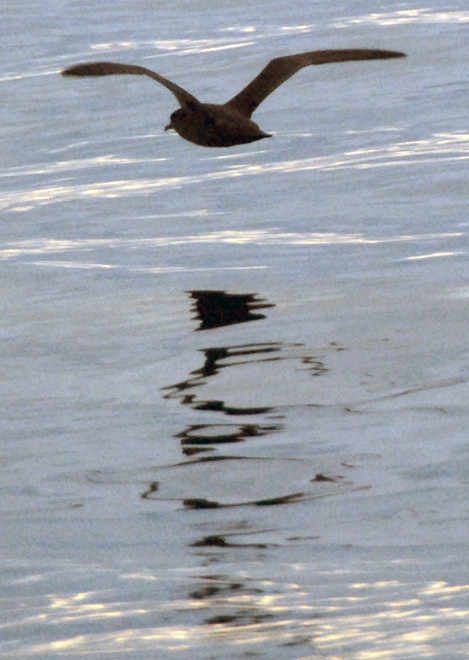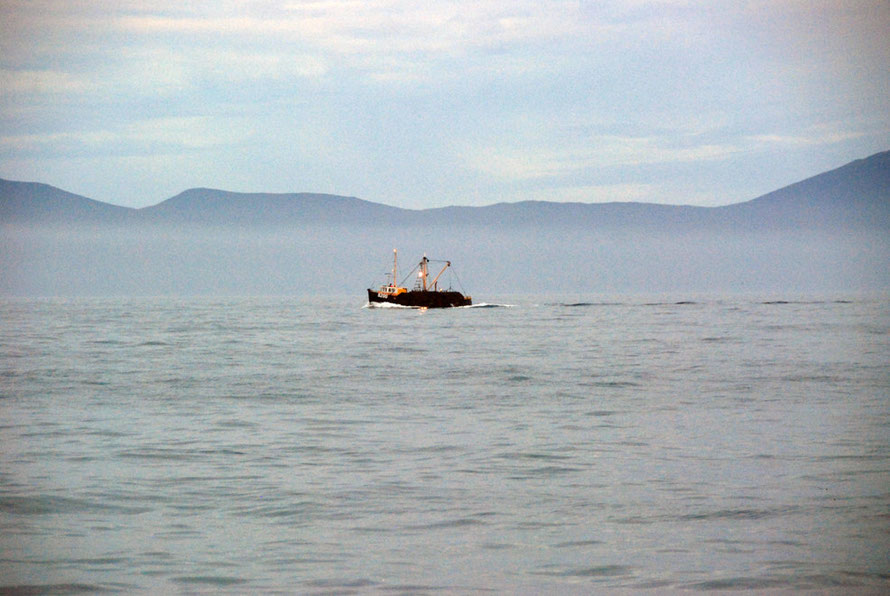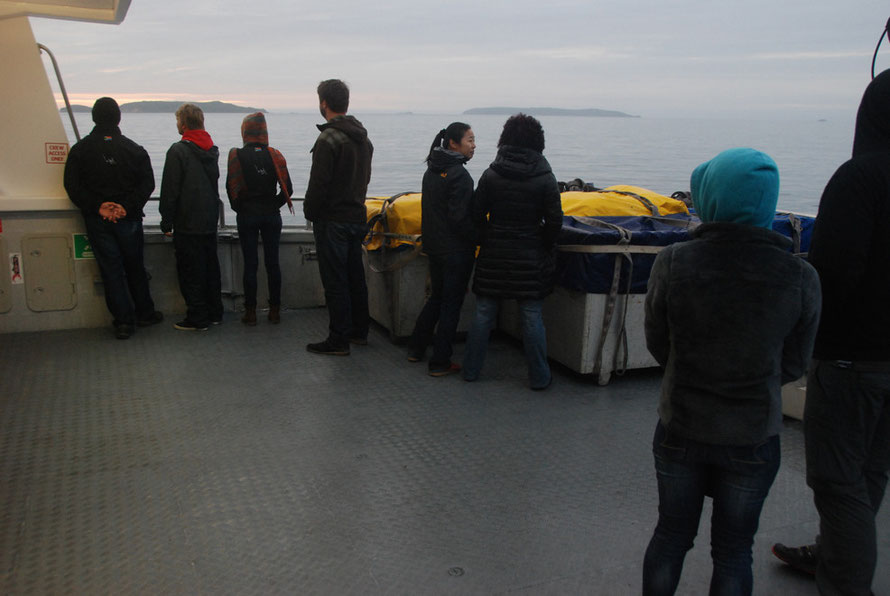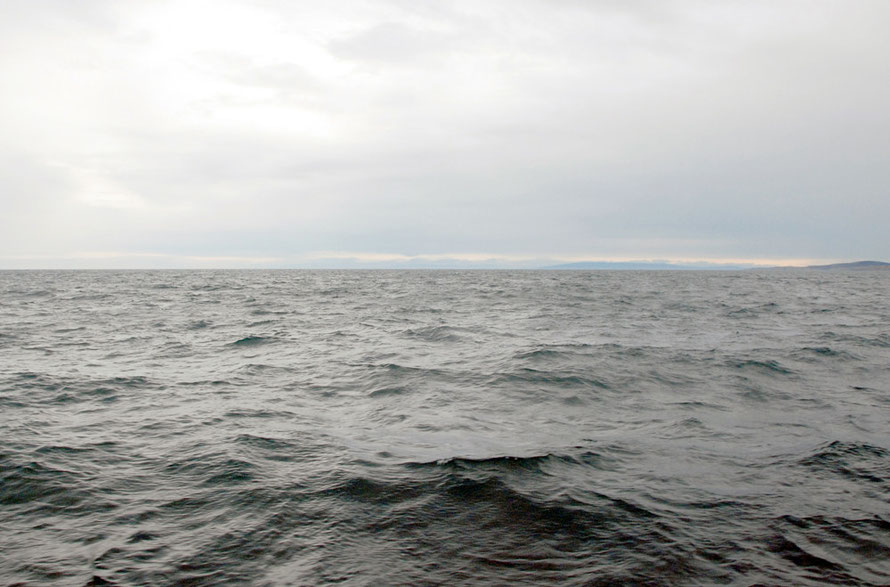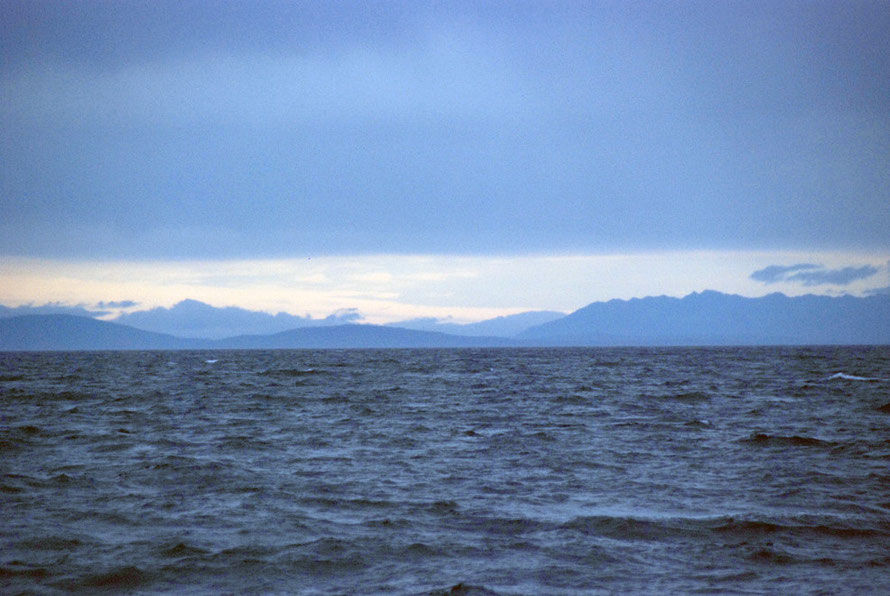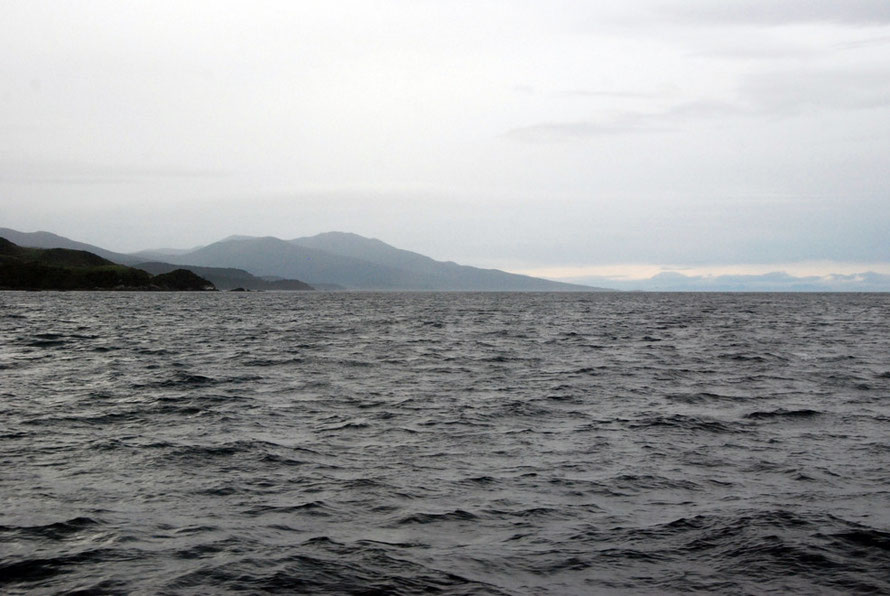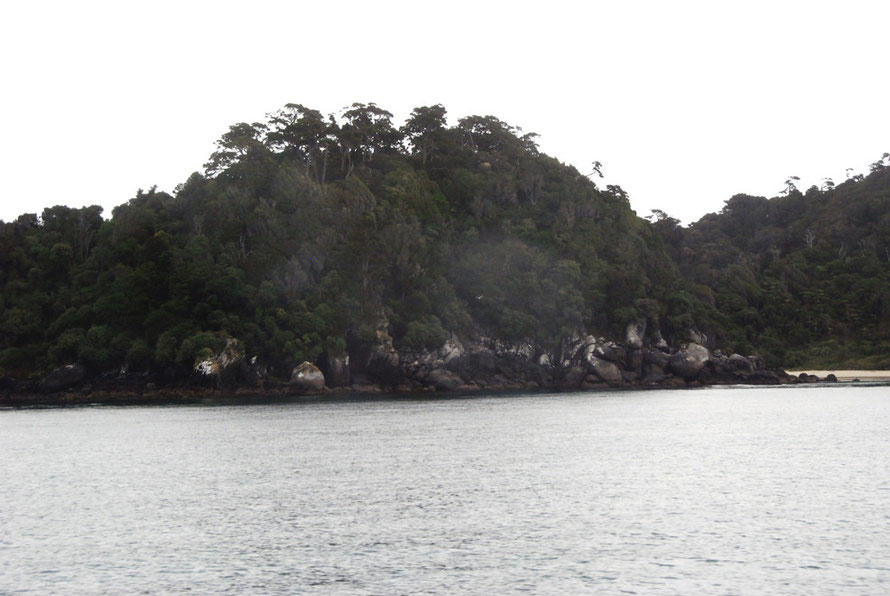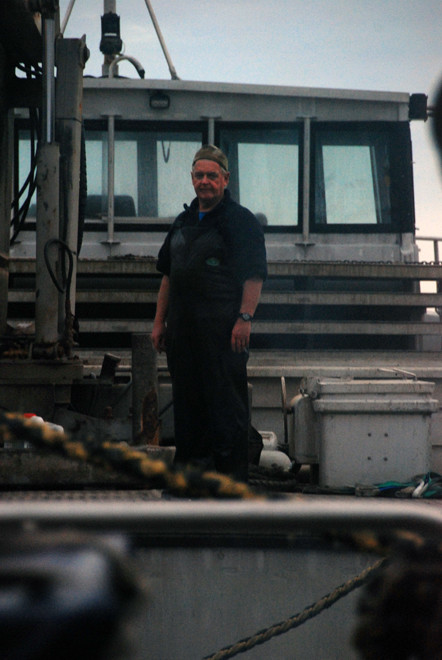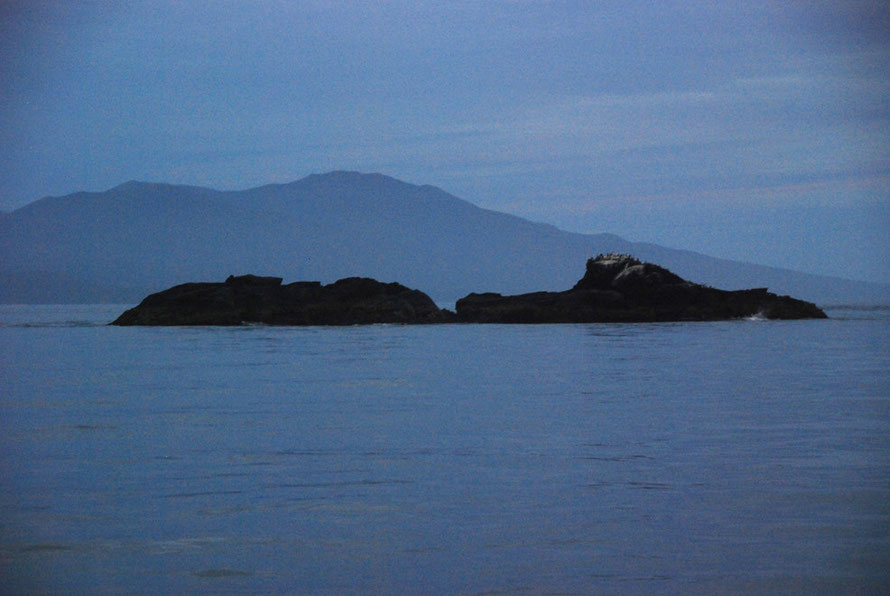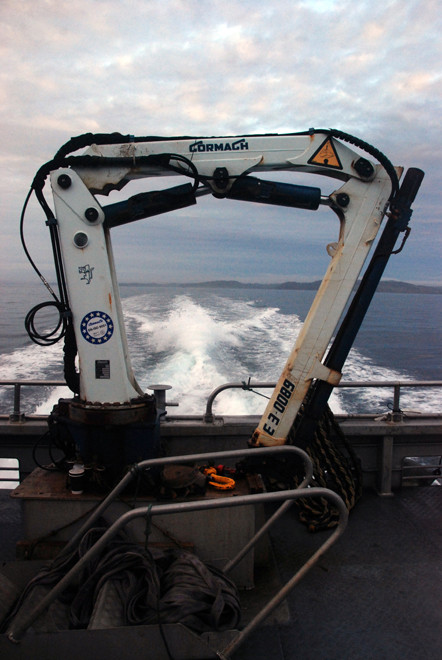IV. Foveaux Strait: the sea road to Stewart Island
They say you can get to Stewart Island through either twenty minutes of terror or an hour of torture.The first option involves being bounced around in a tiny plane. The second being driven to sea
sickness on the fast catamaran ferry to the island. We chose the second and with amazing good fortune hit a sustained period of high pressure weather. This reduced the ferocious Foveaux Strait to
an almost placid millpond. The tide races still raced and the treacherous shoals were sucking and blowing but we were able to stannd outside and enjoy the ride.
The strait is about 130 km long and it widens from 14 km at Ruapuke Island in the east to 50 km at Te Waewae Bay in the west. It also deepens from 20m in the east to to 120 m in the west.
The mix of westerly gales surging into the funnel-like Strait and the tidal and sea currents flowing through it make it a treacherous and turbulent piece of water. Even on a calm day the tide rips flowing over the Polybank and Wairau shoals were clear to see. Between 1998 and 2012 the Strait claimed 23 lives.
The Strait is named after Joseph Foveaux. He gained notoriety as the Lieutenant-Governor on the Norfolk Island Penal Colony. Brendon (2008: 67-8) in his Decline and Fall of the British
Empire describes Foveaux's sadistic delight in flaying men alive and hand outing 'feelers' of two hundred strokes of the cat 'o' nine tails.
Apparently he also, 'enjoyed subjecting females to the scourge' offering to half their 'Botany Bay dozen' - 25 lashes - if they took them unclothed. Women were the 'slaves of slaves', bought and sold for rum and 'under Foveaux's dispensation forced to perform nude corybantics [wild, frenzied dances] in the soldiers' barracks'). (See here for a different view of Foveaux.)

